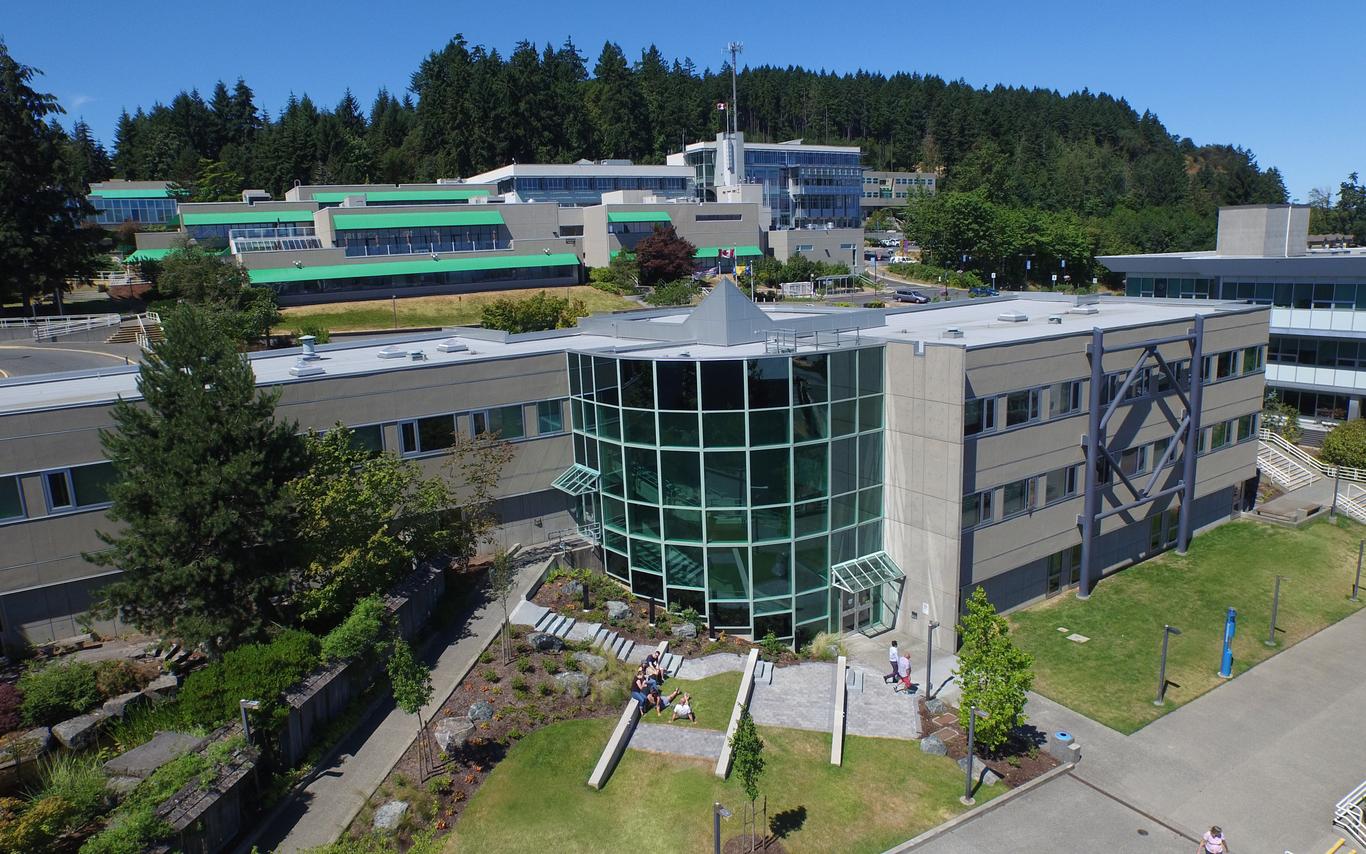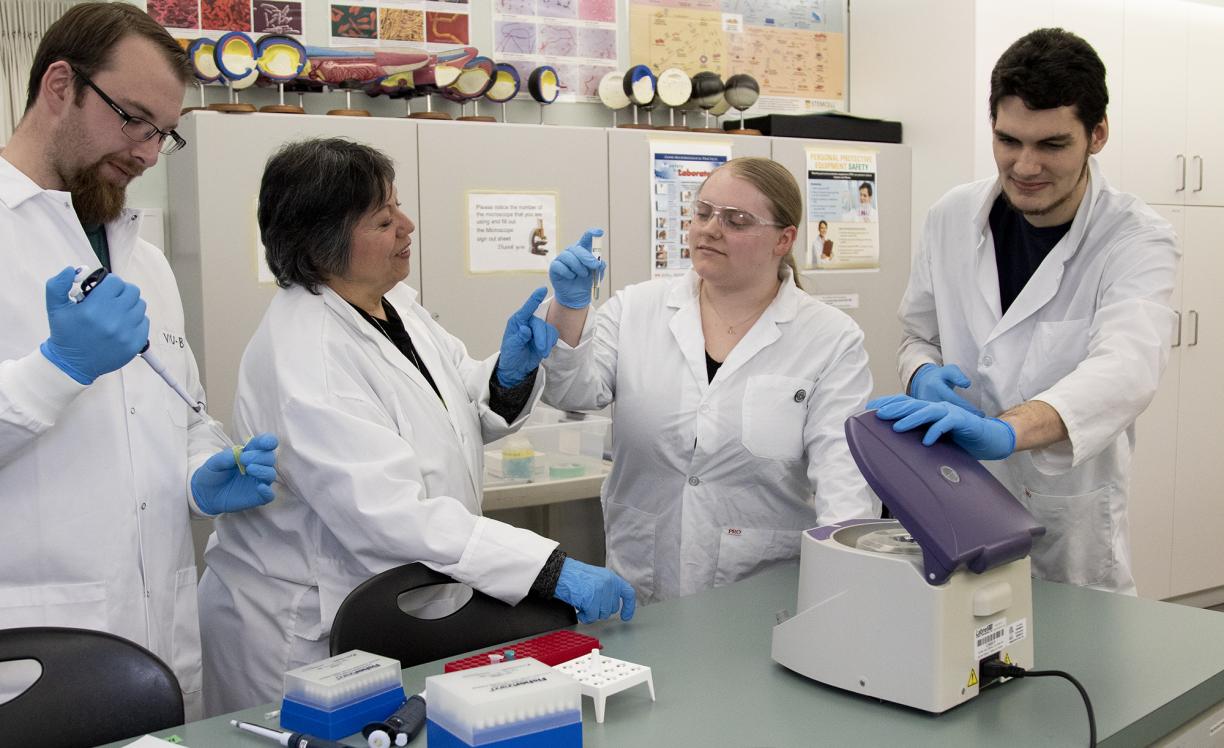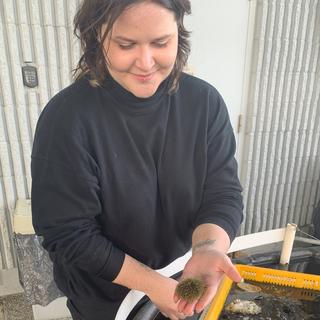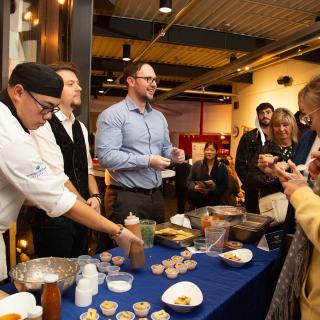VIU’s Dr. Mercedes Hernandez is researching how common antibiotic-resistant genes are among bacteria from urban environments.
Antibiotic resistance in bacteria is a worldwide problem and where previously these bacteria were more commonly found in hospitals, now they can be found in everything from the food we consume to the soil beneath our feet, says Dr. Mercedes Hernandez, a Vancouver Island University (VIU) Biology Professor.
“This is not something to be scared of. It doesn’t mean that you need to get paranoid,” says Hernandez, adding that people can take steps to help control the spread of antibiotic resistance, which includes not taking antibiotics if they don’t need them.
Hernandez first started looking for Staphylococcus aureus carrying the Methicillin-resistant Staphylococcus aureus (MRSA) gene in public places in 2002. Then in 2012 she started collaborating with Dr. John Amaral, a VIU Biology Professor, who passed away in the fall of 2019, and they extended the search to include other antibiotic-resistant genes of interest. Since that time, Hernandez, Amaral, and VIU students have been conducting antibiotic-resistant gene research to discover how common such genes are among bacterial strains in urban environments. They’ve detected a variety of antibiotic-resistant bacterial genes in Nanaimo sewage samples; soil samples from public parks, trails and farmland in the Nanaimo region; and some meat products available in local supermarkets.
Some of the research projects examined samples for the Extended Spectrum B-lactamase (ESBLs) genes, which give bacteria resistance to many different antibiotics. The soil sampling research discovered that some of these genes were present in a variety of soils samples from the Nanaimo region.
For the meat sampling study, Hernandez and her team found that locally raised samples of meat were negative for ESBLs, but several samples from other regions were positive.
“When you are processing meat in your kitchen, some of the bacteria might contaminate your cooking implements and surfaces,” says Hernandez, adding that avoiding cross contamination by ensuring that raw meats and vegetables are processed separately, cooking your food thoroughly, and cleaning your kitchen well after you prepare food are important steps to help prevent and control the spread of bacteria, especially antibiotic-resistant ones, to other areas of your home.
The current research project with VIU student Andre Gauvin involves testing kitchen sponges for the presence of both ESBLs and the MecA gene, which is typically associated with Methicillin-resistant Staphylococcus aureus bacteria. The project is still in the initial stages and no data has been compiled yet.
Hernandez and the student researchers use a molecular technique to identify the antibiotic-resistance genes in bacteria. It’s a safe method for detecting the genes because researchers don’t have to grow the bacteria in the lab, which would require stringent biohazard controls. Hernandez says it’s similar to forensic work where scientists identify DNA markers. With this method the researchers don’t identify which bacterial species actually carry the genes, but look specifically to see if the antibiotic-resistant genes are present among bacteria in the environment.
Overuse of antibiotics causes a selection pressure on bacteria that favours survival of antibiotic-resistant strains. And, bacteria can acquire DNA from other bacteria, says Hernandez. As long as antibiotics are being released into the environment, the antibiotic-resistant genes will be maintained in bacteria. Hernandez says some scientists believe that if antibiotic use decreases then there will be less bacteria carrying the antibiotic-resistance genes because they will no longer need them to survive.
“With lower selective pressure of antibiotics in the environment, there is less reason for bacteria to hold on to these extra genes. Unless they’re needed, it’s a burden to keep these genes, and there is an opportunity for bacteria that aren’t resistant to proliferate and compete more efficiently,” says Hernandez. “With the use of antibiotics, people have to be conscientious about it. We are creating a selection pressure and are starting to see its effects because some of our neighbouring bacteria are now carrying these genes.”
-30-
MEDIA CONTACT:
Rachel Stern, Communications Officer, Vancouver Island University
C: 250.618.0373 l E: Rachel.Stern@viu.ca | T: @VIUNews





